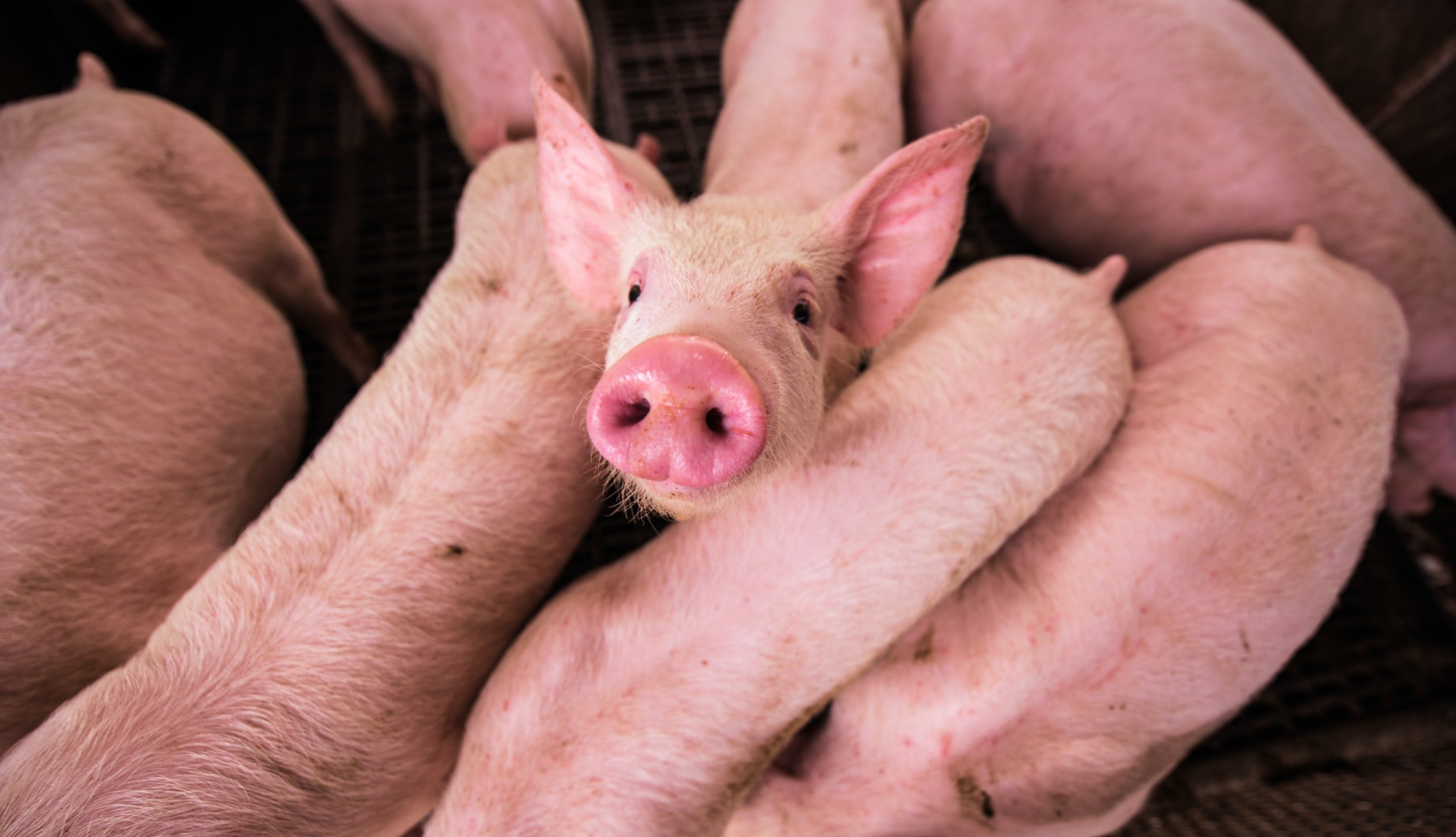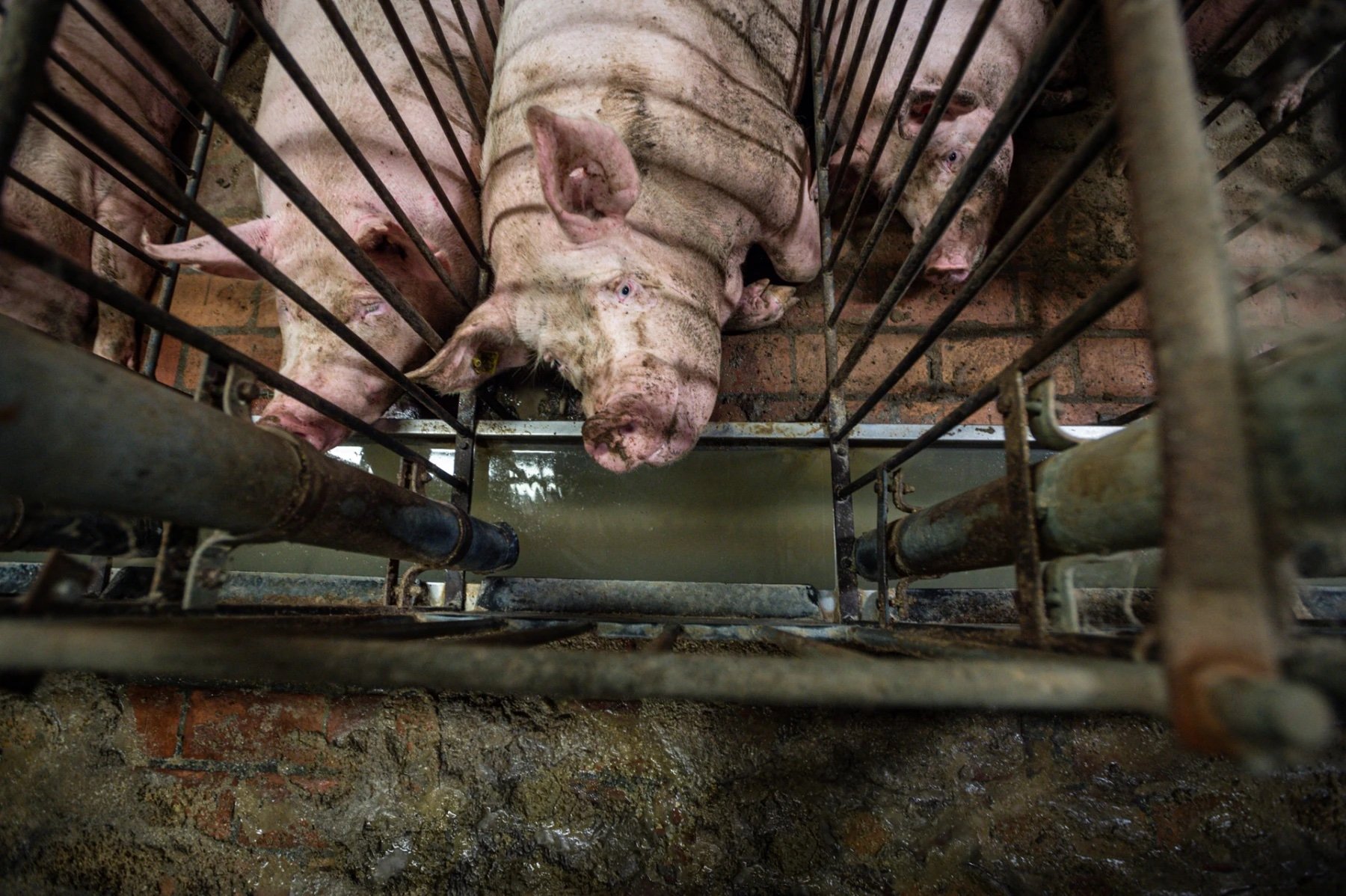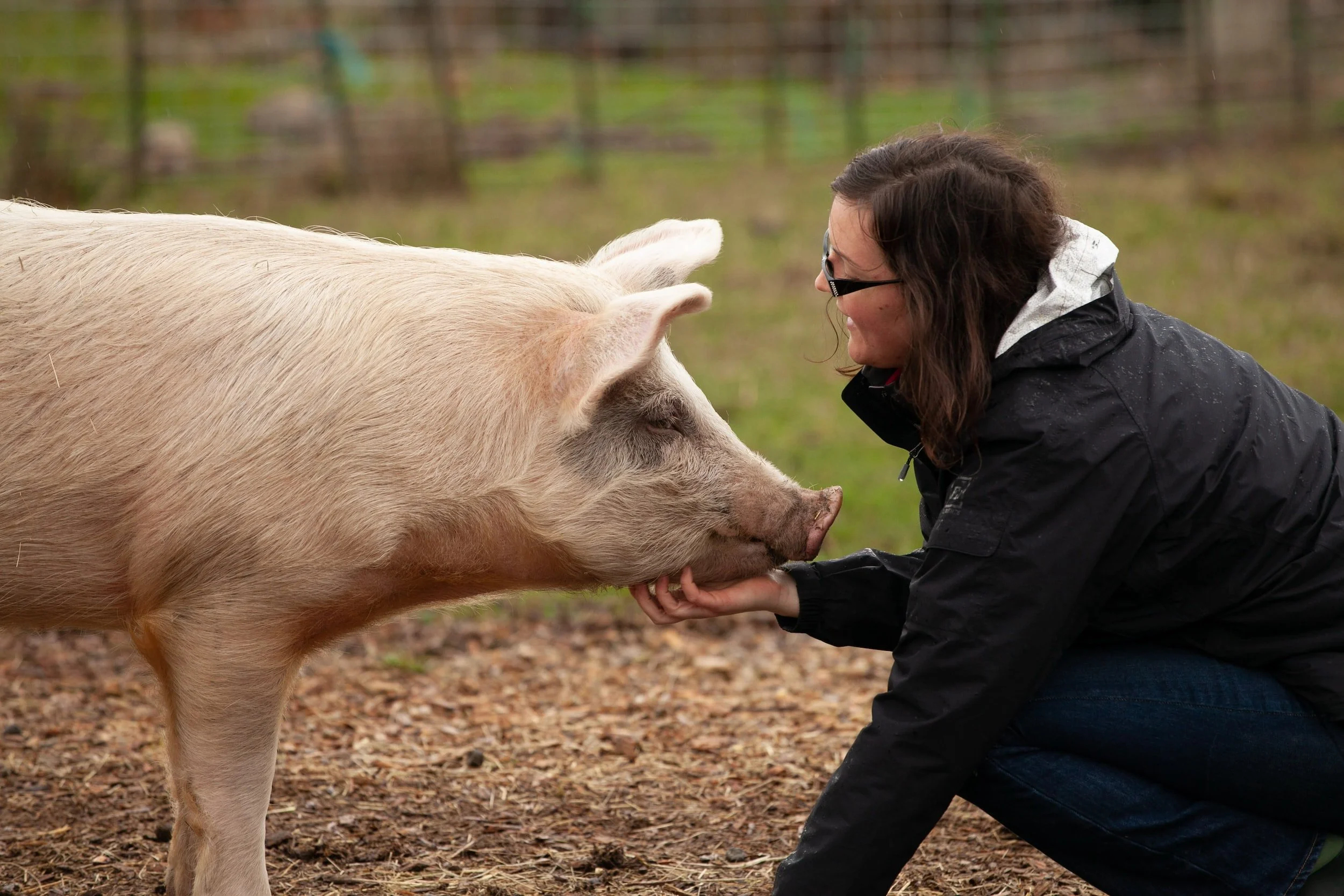
Greys
What you should know about pigs
Facts about pigs in agriculture
How are pigs raised? And do pigs have a good life? Read on to gain insight into how pigs live before they end up on the dinner table.
As smart as a three-year-old
Pigs are intelligent, social, and valuable animals. They are actually smarter than dogs and three-year-old human children! They form social bonds with each other and raise their young together. Pigs dream, build nests, are incredibly clean, and are able to recognize their own names. Nevertheless, 29 million pigs are "produced" annually in Denmark. The majority are exported abroad, and competition to produce more animals in less space is therefore fierce. This is detrimental to the welfare of pigs in industrial agriculture.
Pig welfare at rock bottom
A recent study from 2020, conducted by Danish researchers in animal ethics at the University of Copenhagen, has shown that Danish pig welfare is at rock bottom. This conclusion was reached based on comparisons of pig welfare between five major pig-producing countries in the EU: Sweden, Germany, the Netherlands, the United Kingdom, and Denmark. Together with Germany, Denmark ranks at the very bottom. Despite this, industrial agriculture often wants to paint a picture that shows pig production in Denmark to be top notch.
The biggest animal welfare problems in Danish pig production include routine tail docking of piglets without anesthesia, killing piglets by slamming them to the ground by their hind legs, confining 98% of sows in small stalls for more than two months a year, increasing mortality among piglets (25,000 per day), and stomach ulcers.
Fattening and almost no space
After a piglet is born in conventional agriculture, it is weaned from its mother and placed with other piglets in groups, which are sent further along in the system. Once they reach a certain size, they are housed in the slaughter pig barn, where they are fattened up until they reach 90-115 kg and are then sent for slaughter. In the slaughter pigsty, only one-third of the floor is solid, while the rest is slatted flooring, which is uncomfortable for the pigs to walk on. The pigs are fattened with the aim of making them grow as quickly as possible. Therefore, they are fed energy-rich concentrated feed and almost no roughage. This combination of food causes many pigs to suffer from stomach ulcers. After reaching a weight of around 110 kg, the pigs can look forward to 0.65 m2 of space, which is the only legal requirement that applies to pigs of that size. The vast majority of Danish pigs never see the light of day beyond the day they are transported abroad or to the slaughterhouse.
No place for piglets and their mothers
Piglets are tail docked without anesthesia, even though this has been prohibited under EU law since 2008. Piglets are castrated without anesthesia, which is a very painful experience for them. One of the biggest welfare consequences of large pig farms is that a large number of piglets die. In 2018, 22.5% of piglets in stables died. This is a very high percentage, and it is also a very high percentage of piglets in stables.
The mothers of piglets are strapped into restraint crates where they cannot turn or move while giving birth and nursing. This still happens, despite the fact that several researchers have proven that piglet mortality is not increased in systems where sows are kept in loose housing.
“We practically had to beat them black and blue to get them into the slaughter pens. They simply don't want to go in there once they've tried it before. They know they can't turn around or move once they're in there. It's pure torture for them.”– former stable worker.
The slaughter
After reaching a weight of 90-115 kg, the pigs are sent to slaughter. The transport there is incredibly stressful and frightening for them, as they are packed tightly together in several layers and are not used to the surroundings. Before the pigs are handed over to the transporter, they are marked with a tattoo hammer with sharp metal spikes so that they can be distinguished from one another. When the pigs arrive at Danish slaughterhouses, they are stunned, as required by Danish law. The preferred method is to use CO2 gas, where the pigs are placed in an elevator system and lowered in groups into a shaft to a chamber with a high CO2 concentration. Several scientific studies have shown that although this method is effective in stunning the pigs, it is far from a painless method. The pigs react very strongly and violently to the gas, as it irritates their airways so much that it results in hyperventilation. In addition, they are also exposed to lower concentrations of CO2 in the shaft as they are lowered into the chamber.
These videos from England, which uses the same method as Denmark, reveal that pigs panic even when they detect these lower concentrations of CO2.
Organic pigs
Only about 1% of Danish pig production is organic. In organic stables, pigs have better space conditions than pigs in conventional agriculture and are subject to stricter animal welfare rules. However, many of the welfare problems from conventional agriculture still apply in organic farming, and there are generally many misconceptions. For example, it is not true that organic pigs graze on grass. Only breeding sows and piglets are required to graze, while slaughter pigs and piglets older than 7 weeks are fattened in indoor housing systems with only access to a concrete-covered exercise yard. Organic pigs weighing 110 kg require slightly more space than conventional pigs, namely 1.3 m2 indoors and 1 m2 outdoors.
Despite these minimal welfare improvements in organic pigs, they end up in the gas chamber with conventional pigs on their way to slaughter.
Pigs deserve to live freely
Pigs are living, sentient animals that deserve a free and good life. This is not permitted in industrial agriculture, where the natural needs of pigs are not taken into account. In nature, pigs are playful, social, and curious animals that form strong bonds with each other. Here, they can live up to 15 years. In the industry, they are sent to slaughter when they are 5-6 months old.
Fortunately, there are many ways you can help put an end to the suffering of pigs!
Eat plans instead of pork! This Christmas, try recipes for plant-based meatballs or roast pork, and much more!
If you celebrate Christmas, ask the others you are with well in advance if you should try a plant-based recipe this time.
Sign up and receive free, delicious plant-based recipes and much more at VeganerUdfordringen.dk.


